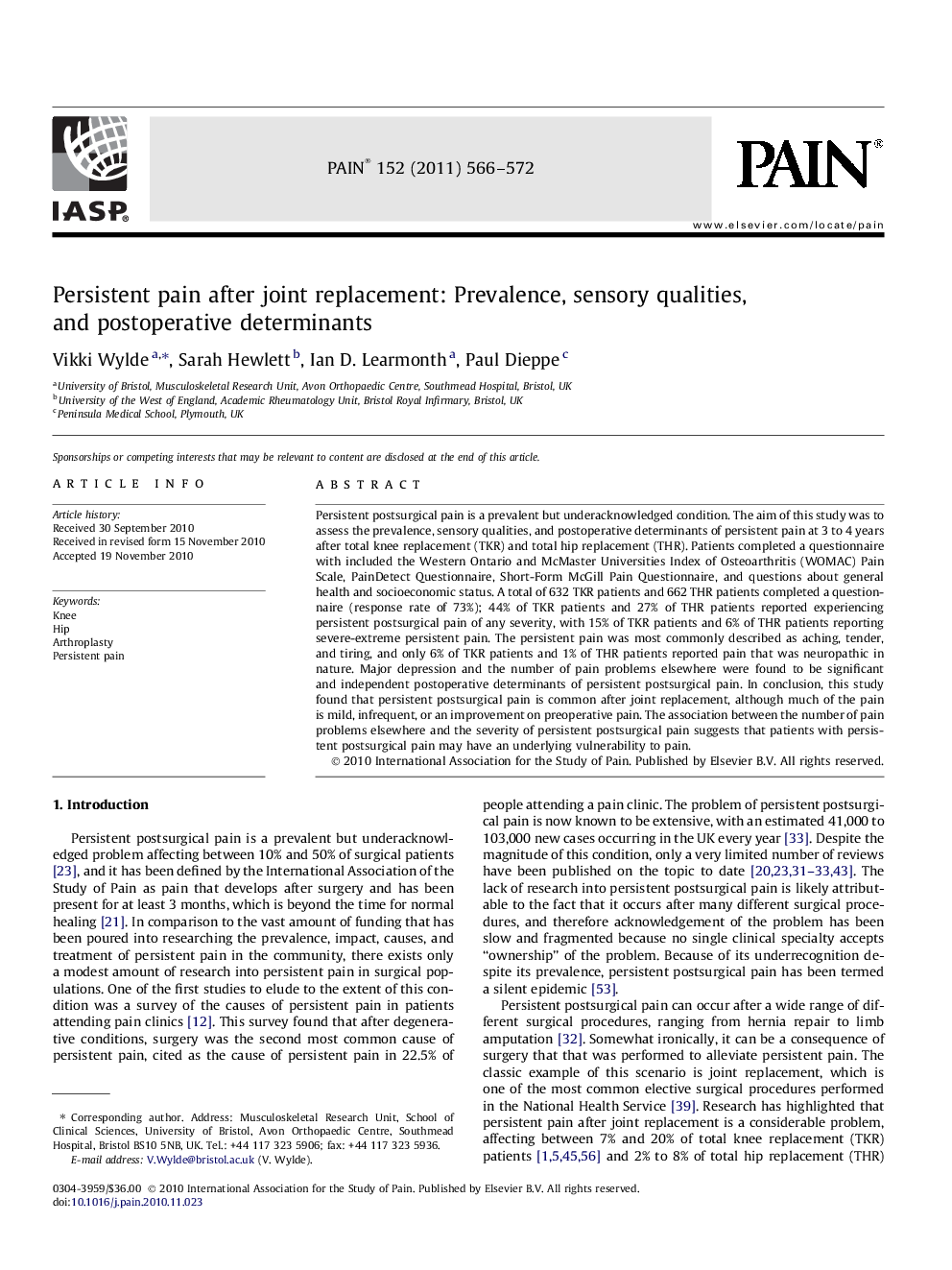| کد مقاله | کد نشریه | سال انتشار | مقاله انگلیسی | نسخه تمام متن |
|---|---|---|---|---|
| 10451114 | 918389 | 2011 | 7 صفحه PDF | دانلود رایگان |
عنوان انگلیسی مقاله ISI
Persistent pain after joint replacement: Prevalence, sensory qualities, and postoperative determinants
دانلود مقاله + سفارش ترجمه
دانلود مقاله ISI انگلیسی
رایگان برای ایرانیان
کلمات کلیدی
موضوعات مرتبط
علوم زیستی و بیوفناوری
علم عصب شناسی
علوم اعصاب سلولی و مولکولی
پیش نمایش صفحه اول مقاله

چکیده انگلیسی
Persistent postsurgical pain is a prevalent but underacknowledged condition. The aim of this study was to assess the prevalence, sensory qualities, and postoperative determinants of persistent pain at 3 to 4Â years after total knee replacement (TKR) and total hip replacement (THR). Patients completed a questionnaire with included the Western Ontario and McMaster Universities Index of Osteoarthritis (WOMAC) Pain Scale, PainDetect Questionnaire, Short-Form McGill Pain Questionnaire, and questions about general health and socioeconomic status. A total of 632 TKR patients and 662 THR patients completed a questionnaire (response rate of 73%); 44% of TKR patients and 27% of THR patients reported experiencing persistent postsurgical pain of any severity, with 15% of TKR patients and 6% of THR patients reporting severe-extreme persistent pain. The persistent pain was most commonly described as aching, tender, and tiring, and only 6% of TKR patients and 1% of THR patients reported pain that was neuropathic in nature. Major depression and the number of pain problems elsewhere were found to be significant and independent postoperative determinants of persistent postsurgical pain. In conclusion, this study found that persistent postsurgical pain is common after joint replacement, although much of the pain is mild, infrequent, or an improvement on preoperative pain. The association between the number of pain problems elsewhere and the severity of persistent postsurgical pain suggests that patients with persistent postsurgical pain may have an underlying vulnerability to pain.
ناشر
Database: Elsevier - ScienceDirect (ساینس دایرکت)
Journal: PAIN® - Volume 152, Issue 3, March 2011, Pages 566-572
Journal: PAIN® - Volume 152, Issue 3, March 2011, Pages 566-572
نویسندگان
Vikki Wylde, Sarah Hewlett, Ian D. Learmonth, Paul Dieppe,